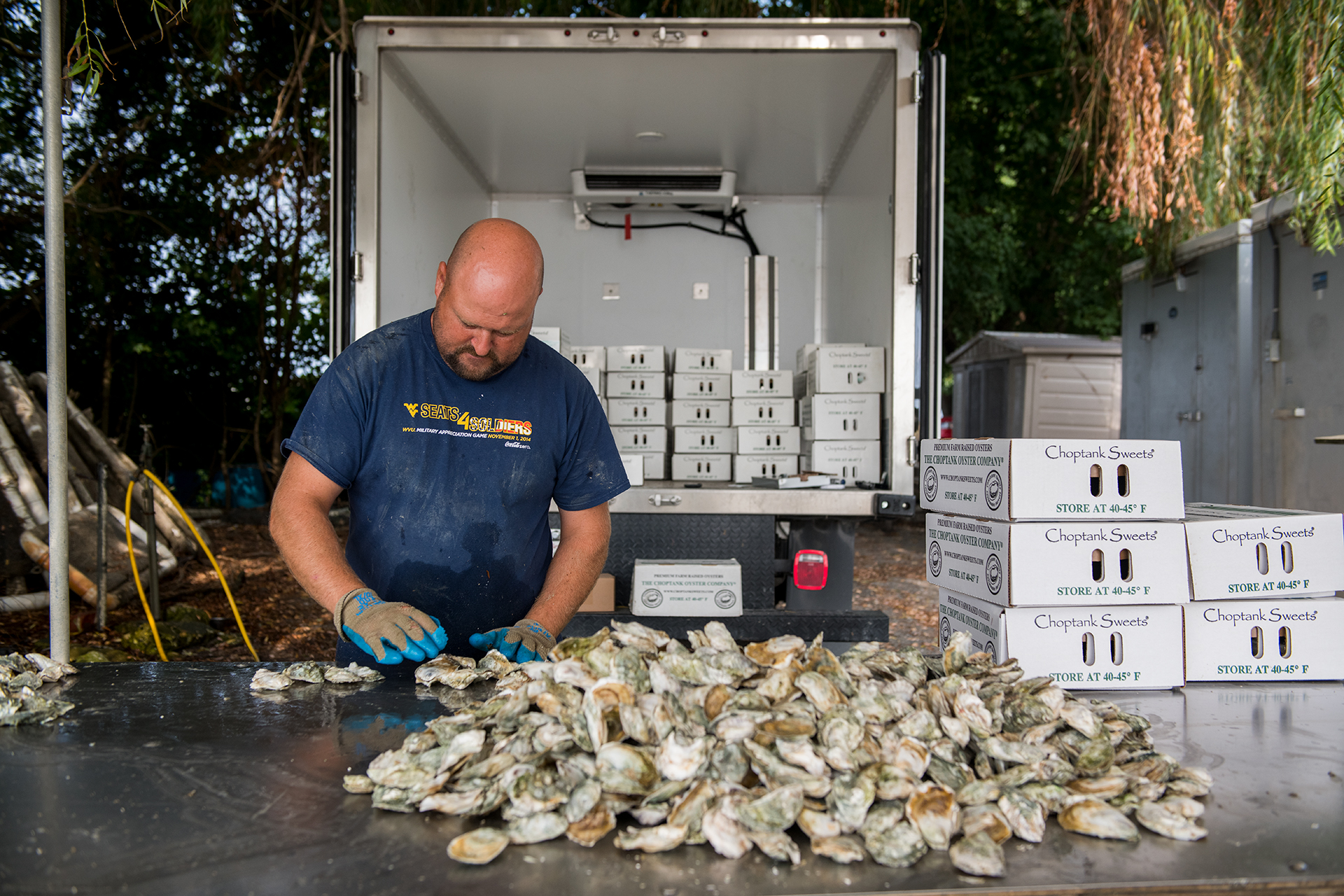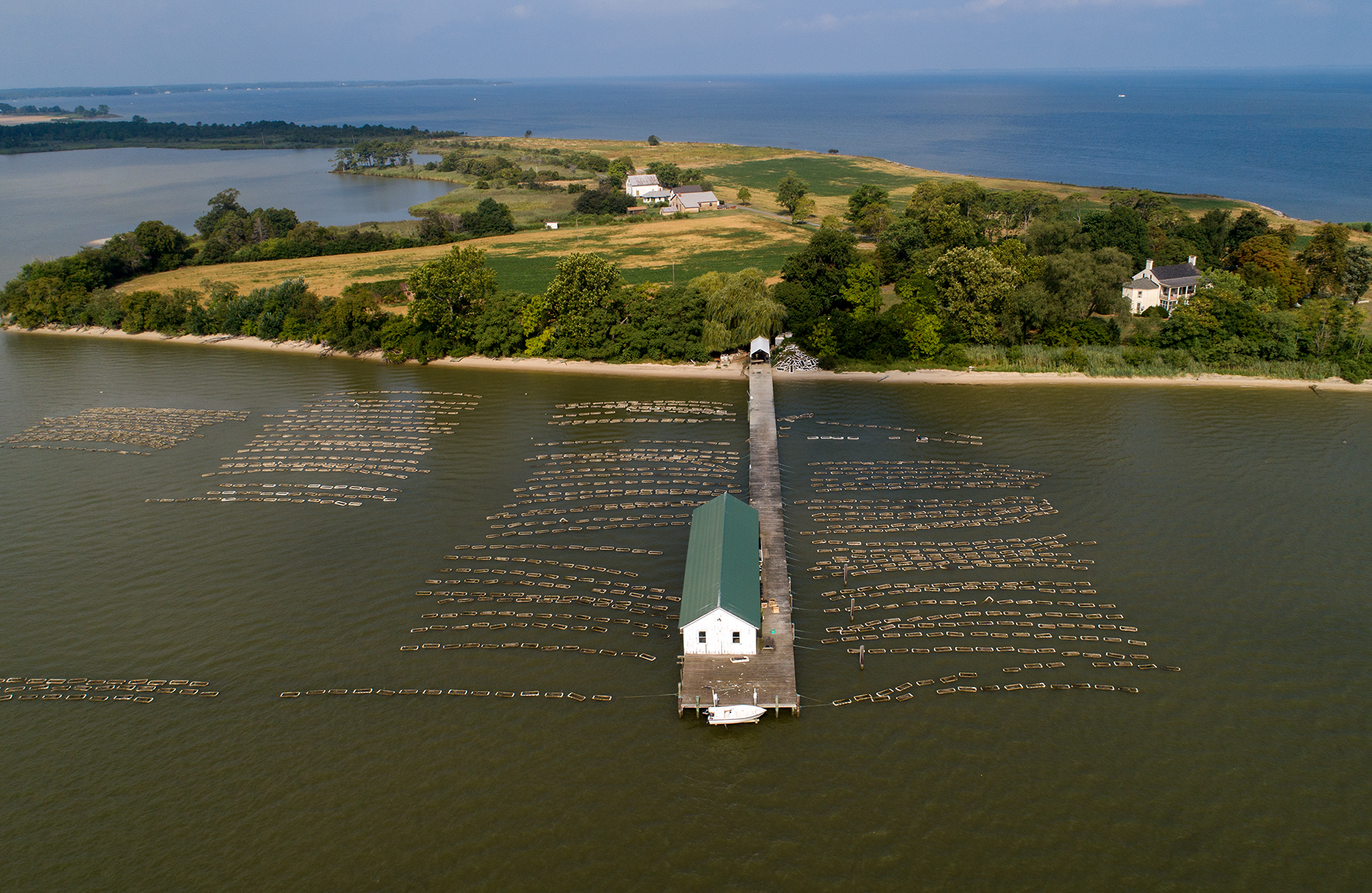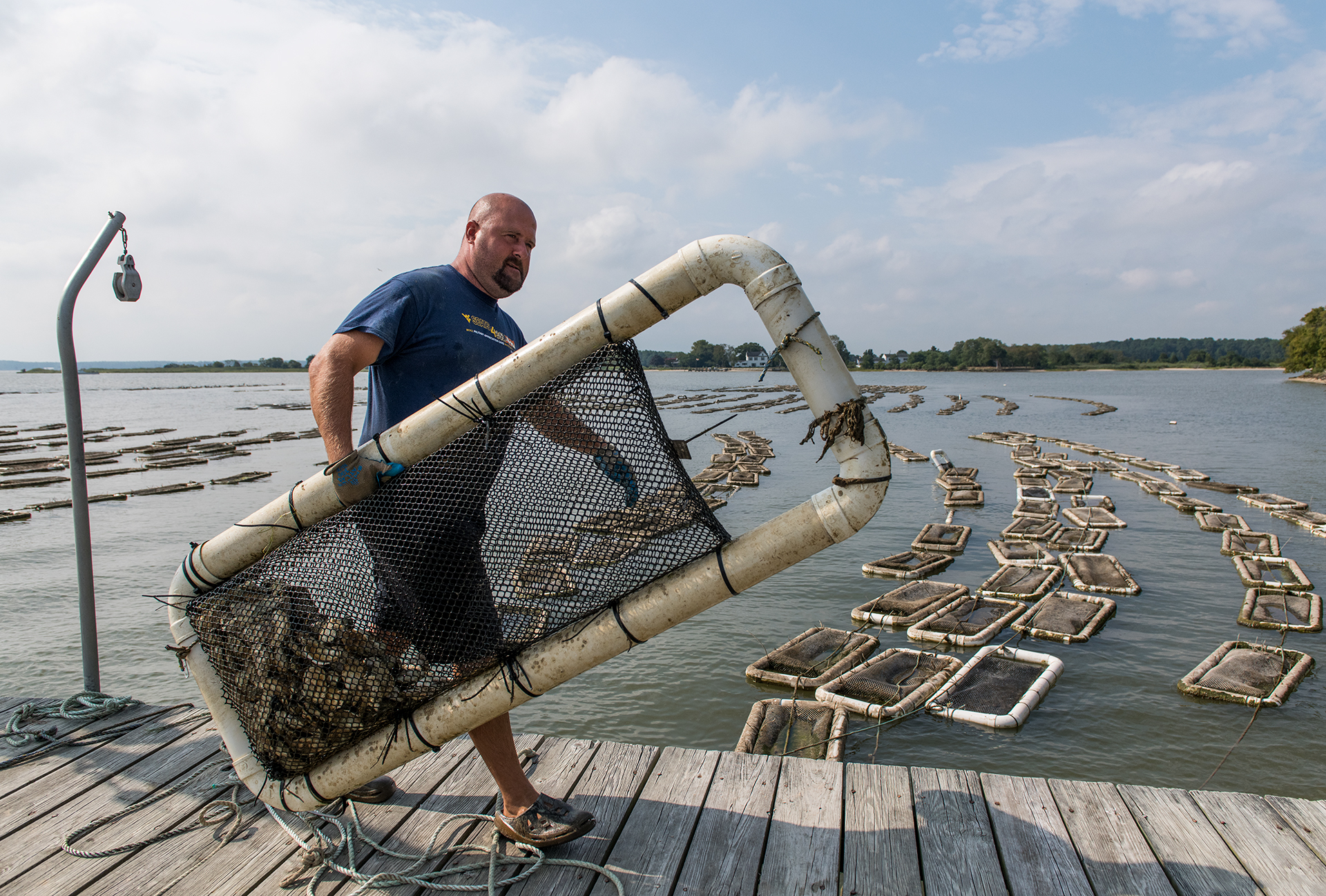The Choptank Oyster Company In Cambridge Is
A Leader In The Local Aquaculture Industry
Kevin McClarren doesn’t sell oysters before it’s time.
Farm-raised oysters grown at The Choptank Oyster Company’s waterfront headquarters in Cambridge take at least two years, often three, to make their way to market. But that’s what sets Choptank oysters apart, McClarren, the company’s longtime general manager, said, from wild-harvested Chesapeake Bay oysters found in waterways throughout the Eastern Shore.
Even as other businesses have followed The Choptank Oyster Company’s lead, a growth process that blazed a trail two decades ago keeps this successful business at the forefront of the growing industry — at the rate of roughly one million oysters for sale each year.
The process begins with the farm’s best and brightest oysters, followed by a unique plan featuring ingenuity and patience that produces results and has seafood distributors and restaurants up and down the Eastern seaboard clamoring for Choptank oysters.
ALL SYSTEMS GO The Choptank Oyster Company has several million oysters sitting in the Bay at any one time, each acting as a natural filter helping to remove large volumes of excess nutrients that have plagued its waters.
DOING THEIR PART The health of the Chesapeake Bay is vital to the oyster industry. Aquaculture may not be the only solution to the Bay’s water-quality problems, but The Choptank Oyster Company’s General Manager Kevin McClarren, left, believes their farming techniques are a vital component to its longterm improvement.
The Process
Step 1: Man-made changes in temperature and salinity levels in the hatchery are all it takes to spark those mature oysters into spawning the next crop of oysters. No matter how cold it is outside, the rise in temperature and an infusion of much-needed food and salt, McClarren said, “fool the oysters into thinking it’s summertime. A sharp rise in temperature is their indicator to spawn.”
Step 2: McClarren adds sperm to eggs at a microscope on his desk. Eggs are fertilized within minutes. “Once I get about 80 percent fertilization, those go into another tank in the hatchery,” he said. “Then, the next day, there’s little baby oysters swimming around.”
Step 3: These budding oysters continue to grow for the next two to three weeks before settling onto the bottom of the tank, only to be moved into another tank that has what McClarren called “finely ground oyster shells” at the bottom. “They find the piece of shell they like and attach themselves to that piece — and boom, they metamorphose what you would think of as an oyster,” he said.
Step 4: Oysters move into an upweller in the nearby river, where they are nourished by bay water and algae until they reach one-half inch in size. They’re then placed into floating barges for the next two to three years. “They’re feeding and growing,” he said.
Step 5: Finally, it’s time to cash in on these now mature oysters. “We’ll start to pull the biggest oysters out of those floats,” McClarren said. “It’s not like making something really quickly and turning it around.”

THE SWEET STUFF
The company’s Choptank Sweets oysters are available in finer restaurants
and retailers throughout the East Coast and beyond.
Of course, it’s always worth the wait. “We’ve developed the market for a farm-raised Chesapeake Bay oyster,” he said. “It took us a long time to get into the market. But once we started getting into restaurants and working with distributors, all of a sudden we created a buzz.”
Story by Victor Fernandes
Photos by Jay Fleming






